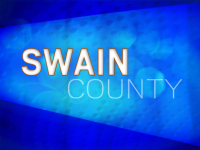A better future for the Pigeon
Few rivers have been the focus of as much controversy over the last century as the Pigeon, a fact that makes it worthwhile to also celebrate the victories as the controversy fades away and a whole new era emerges. A major milestone in those efforts — the lifting of the last advisory against eating fish caught downstream of the paper mill in Canton — occurred earlier this month, one that is among the best pieces of news in the river’s recent history.
The last advisory against fish consumption on the Pigeon River was for carp, a bottom feeder. Dioxin, which was a byproduct of the paper mill’s production process and is a known carcinogen, had settled into sediment at the river’s bottom and for decades had worked its way up the food chain into the fish. Bottom feeders, as might be expected, are the most susceptible to this kind of contamination, and were the last to have their advisory lifted.
According to state health officials, the dioxin level in every fish sampled from the Pigeon River in 2005 and 2006 had dioxin levels below the level considered dangerous by the U.S. Food and Drug Administration. Bob Williams, Blue Ridge Paper’s director of regulatory affairs, says the mill’s discharges have had no measurable levels of dioxin since 1989. A spokesperson for the North Carolina Department of Health and Human Services said dioxin concentrations in fish samples taken from the river have decreased 99 percent since 1990.
Since the paper mill was built in the early 1900s, the Pigeon River has suffered. Fish and other wildlife died or were infected with various ailments related to the pollution. The river flowed brown and foamy, the opposite of what a healthy mountain river should look like.
The lifting of the advisory is symbolic of a different attitude among all parties involved. Blue Ridge Paper has spent $20 million since 2002 in environmental improvements. Prior to the mill’s purchase by investors and employees, Champion International had also invested heavily to decrease its impact on the river. All told, the mill has significantly reduced water usage and has cleaned up what it puts back into the Pigeon.
Related Items
Now that all this has occurred, efforts are under way to restore the river’s wildlife. The University of Tennessee, the North Carolina Wildlife Resources Commission, Blue Ridge Paper and the Haywood County School System are working to reintroduce species that might return to the river if it wasn’t for dams blocking migration routes. Researchers have restored snails, mollusks, minnows, darters and various shiners to the river — indicator species often used to measure a river’s aquatic health —in one of the few projects by wildlife officials to re-introduce non-game species to their original habitat.
All of this is good news for the communities through which this river flows. Downstream residents in Tennessee, which did not benefit from the great-paying jobs at the paper mill, initiated numerous lawsuits. Network television aired news specials contending the dioxin led to increased cancer pockets, and environmental protesters were a common sight in the 1980s.
Some scientists warn that the lowered dioxin levels detected in the Pigeon may still be unsafe, and the color of the river is still not at its natural state. But those ugly chapters from the past have become another part of the Pigeon River’s history. Now it is a river restored, one that will have better days ahead. In fact, this river stands as proof that technology, money and determination can undo the most serious environmental degradation that industry can dish out. In these days of global warming and all its accompanying woes, that’s a hopeful sign.









